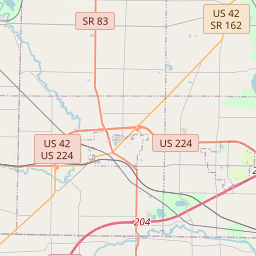Huntington Civil War Memorial
Historical marker location:






April 12, 1861: The Civil War begins with the Confederate attack on Fort Sumter, located in South Carolina's Charleston Harbor.
April 15, 1861: President Abraham Lincoln issues a call for 75,000 volunteers to serve in the Union Army to suppress the rebellion.
May 24, 1861: The first major land battle, known as the First Battle of Bull Run (or First Battle of Manassas), takes place in Virginia. It ends in Confederate victory.
September 17, 1862: The Battle of Antietam in Maryland becomes the bloodiest single-day battle in American history, with heavy casualties on both sides. The Union forces, commanded by General George McClellan, manage to halt Confederate General Robert E. Lee's advance into Union territory.
January 1, 1863: President Lincoln issues the Emancipation Proclamation, declaring that all slaves in Confederate-held territories are to be set free. However, the proclamation does not immediately free all slaves in the United States.
July 1-3, 1863: The Battle of Gettysburg in Pennsylvania takes place, resulting in a significant Union victory and inflicting heavy casualties on Confederate forces. It marks a turning point in the war.
November 19, 1863: President Lincoln delivers the Gettysburg Address, emphasizing the principles of liberty, equality, and the preservation of the Union.
April 9, 1865: General Robert E. Lee surrenders to Union General Ulysses S. Grant at Appomattox Court House in Virginia, effectively ending the Civil War.
April 14, 1865: President Lincoln is assassinated by John Wilkes Booth while attending a play at Ford's Theatre in Washington, D.C.
May 10, 1865: Confederate President Jefferson Davis is captured, signaling the collapse of the Confederate government.
December 6, 1865: The Thirteenth Amendment to the United States Constitution is ratified, officially abolishing slavery throughout the country.
While this timeline provides an overview of key events, it is important to note that the Civil War spanned over four years, from 1861 to 1865, and encompassed numerous battles, campaigns, and political developments that shaped the course of American history.
Ohio is known as the "Mother of Presidents" because of its role in producing so many US presidents. In addition to the seven presidents who were born in Ohio, another president, William Henry Harrison, lived in Ohio for much of his life and is sometimes counted as an honorary Ohioan.
In 1824, Lorain County was officially established and named after the Lorraine region in France. The county quickly grew in population and became an important center for agriculture, industry, and commerce. The construction of the Ohio and Erie Canal in the 1830s further boosted the county's development, connecting it to the Great Lakes and allowing for the transportation of goods.
Throughout the 19th and 20th centuries, Lorain County became known for its thriving industries, such as steel production, manufacturing, and shipbuilding. The city of Lorain, in particular, grew into a major industrial hub, attracting workers from various parts of the country. The county also played a significant role during World War II, with many of its industries contributing to the war effort.
In recent decades, as the manufacturing industry declined, Lorain County has focused on diversifying its economy and promoting sectors such as healthcare, education, and tourism. Today, the county is home to several colleges and universities, including Oberlin College and Lorain County Community College. The county's natural beauty and recreational opportunities, including Lake Erie and various parks, continue to attract visitors and residents alike. Lorain County's history and its ongoing efforts for growth and development make it a fascinating and vibrant place to explore.
Lorain County Timeline
This timeline provides a condensed summary of the historical journey of Lorain County, Ohio.
- 1807 - Lorain County is officially established.
- 1812 - The first permanent settlement is established in Elyria.
- 1832 - The Ohio and Erie Canal opens, boosting the county's economic growth.
- 1857 - Oberlin College becomes the first coeducational college in the United States.
- 1894 - Lorain experiences a significant population boom due to the growth of its steel industry.
- 1905 - Lorain becomes a city.
- 1919 - The United Steel Workers union is established in Lorain.
- 1942 - The Ford Motor Company builds a large plant in Lorain, contributing to the county's industrial prominence.
- 1980 - The decline of the steel industry leads to economic challenges in Lorain County.
- 1996 - The Lorain County Community College opens, providing educational opportunities for residents.
- 2010 - Lorain County celebrates its bicentennial anniversary.